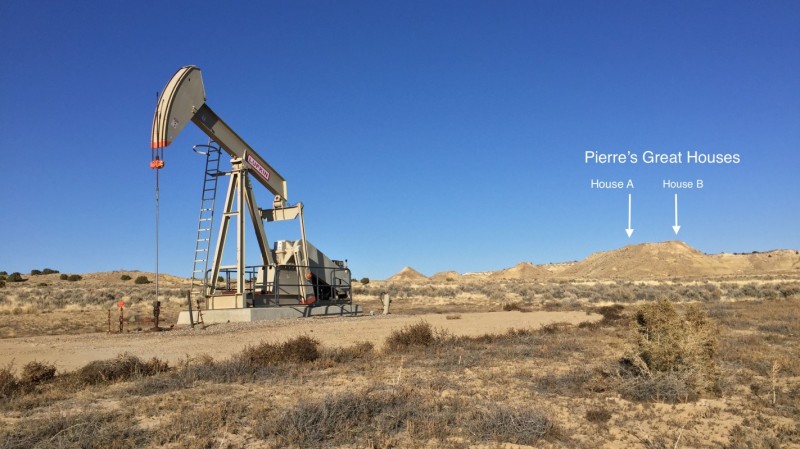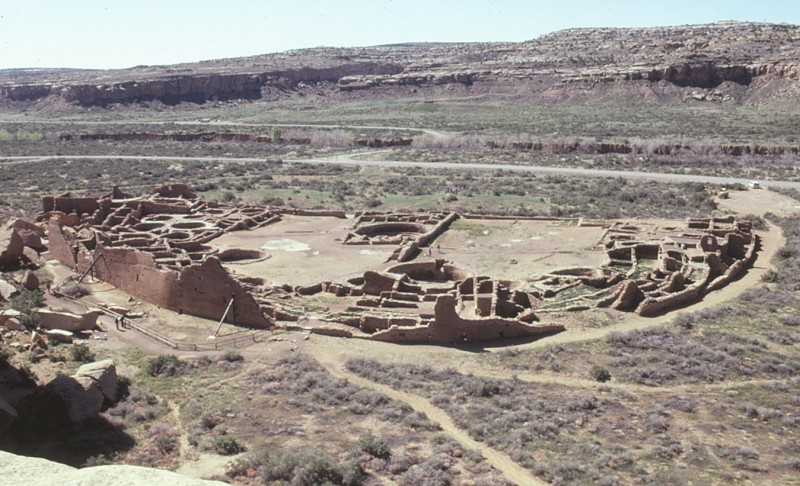The striking landscape of northwestern New Mexico holds deep meaning to Indigenous peoples, whose ancestors established the Chacoan culture of the high desert. Today, the Chaco Culture National Historical Park is a UNESCO World Heritage site, and nearly 200 archaeological sites dot the surrounding landscape.
However, this sacred land of mountains and mesas faces some very modern threats from oil and gas development.
One of the main points of The Greater Chaco Landscape: Ancestors, Scholarship, and Advocacy, a volume co-edited by Binghamton University Anthropology Professor Ruth Van Dyke and Carrie Heitman of the University of Nebraska-Lincoln, is to raise public awareness of these threats.
Released in April by University Press of Colorado, The Greater Chaco Landscape volume and related endeavors represent eight years of work that brought together scholars and Native American cultural experts. The Greater Chaco Landscape has just won the 2021 American Anthropological Association's Engaged Anthropology Award. The award was presented to Van Dyke and Heitman this month at the American Anthropological Association's annual meeting in Baltimore.

In partnership with nonprofits, tribes and environmental groups, the scholars have been pushing for a 10-mile buffer zone around the park in which new oil and gas leases would be prohibited. They finally have a victory: This month, President Joe Biden and Secretary of the Interior Deb Haaland, a member of the Laguna Pueblo tribe, announced the establishment of the buffer zone by executive degree.
The battle isn't over yet, Van Dyke cautioned: The moratorium only applies to new leases over the next 20 years and about 90 percent of the federal lands in question have already been leased. Plus, many understudied archaeological sites lie outside of the buffer zone.
"But we are celebrating at the moment; this is really huge," Van Dyke said.
While Chaco has been studied for around 120 years, most of the attention has focused on Chaco Canyon, famous for its multi-storied, sandstone masonry great houses built by ancient Pueblo farmers between 850 and 1150 CE.
However, the canyon is the epicenter of a phenomenon that stretched across the Colorado Plateau, encompassing an area the size of Alabama. These 200 "outlier" sites include great houses like those found at Pueblo Bonito, but most are smaller; they have been a focus of study since the 1970s.
Chaco scholars have several competing theories to explain why the architecture is so far-flung, said Van Dyke, who has been working in this area since 1991. Some believe the ancient Pueblo lived in egalitarian farming communities and used the great houses as a type of community center; on the other end of the spectrum are scholars who believe that the canyon was the center of a hierarchical, expansionist state.
"The explanation that makes the most sense to me involves Chaco Canyon as the center of a religious belief system in which pilgrimage figured prominently," Van Dyke said. "The people who lived in the far-flung outliers came to Chaco Canyon, perhaps on the solstices or equinoxes (we have lots of evidence for that), and took ideas back home with them."
For all of its history, the area is understudied: Only a handful of the 200 outlying sites have been excavated, and only 30 to 40 have robust community data. Understanding this wider area is key to understanding Chaco Canyon - a tenuous undertaking, since most of the sites aren't well-protected.
The San Juan Basin, with Chaco at its heart, sits on top of the Mancos shale formation. Like the Marcellus shale in the Southern Tier, it's considered ripe for oil and gas extraction, which could potentially endanger the landscape and the archaeological sites within it.

Tom Lincoln, who retired as the Department of Interior's inter-mountain regional director for cultural resources in 2016, invited scholars to study the situation, which proved the genesis of the project. Between 2013 and 2019, Van Dyke and Heitman held two conferences with more than 20 scholarly and indigenous experts, and also published an 87-page white paper used for archaeological management today.
Native communities - specifically the Hopi, Acoma, Zuni and Navajo - still visit the canyon and other sacred sites as part of their religious practices. The volume features video chapters in which Native culture experts discuss the landscape within the landscape itself. That's a shift away from the discipline's early days, in which Eurocentric anthropologists treated Native peoples as little more than hired labor.
"For them, Chaco is more than a scholarly pursuit; these are the homes of their ancestors. They have oral traditions going back generations that talk about the things that happened at Chaco," Van Dyke said. "It is really important for me and for my white colleagues to foreground Native voices and concerns with respect to Chaco. It's not our landscape; it's theirs."
While published in hard copy, the book also exists in an open-access, hybrid work that allows users to seamlessly toggle through video chapters and color photos while reading the text. You can read it here.
Van Dyke and Heitman are planning to raise funds to continue the video project, adding more Native voices to the work. Native voices also need to be heeded by the Bureau of Land Management when it comes to making mineral leasing and management decisions, Van Dyke said.
"Native voices should be the first ones we turn to when we are thinking about how to treat their sacred landscapes, and the archaeological materials left by their ancestors," she said. "We can't make all of northwest New Mexico into a park, but we need better laws to ensure that the archaeology across this region is protected, studied and documented (and where possible, avoided), not simply destroyed."








